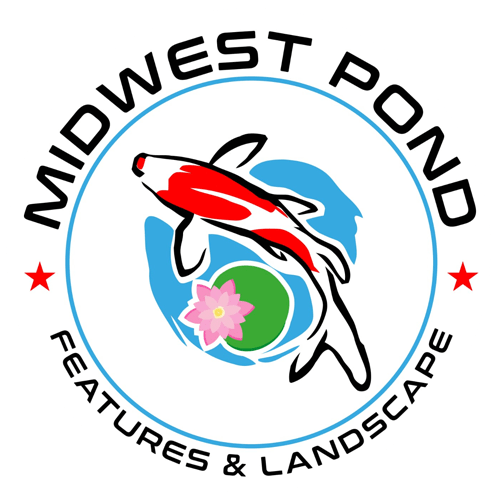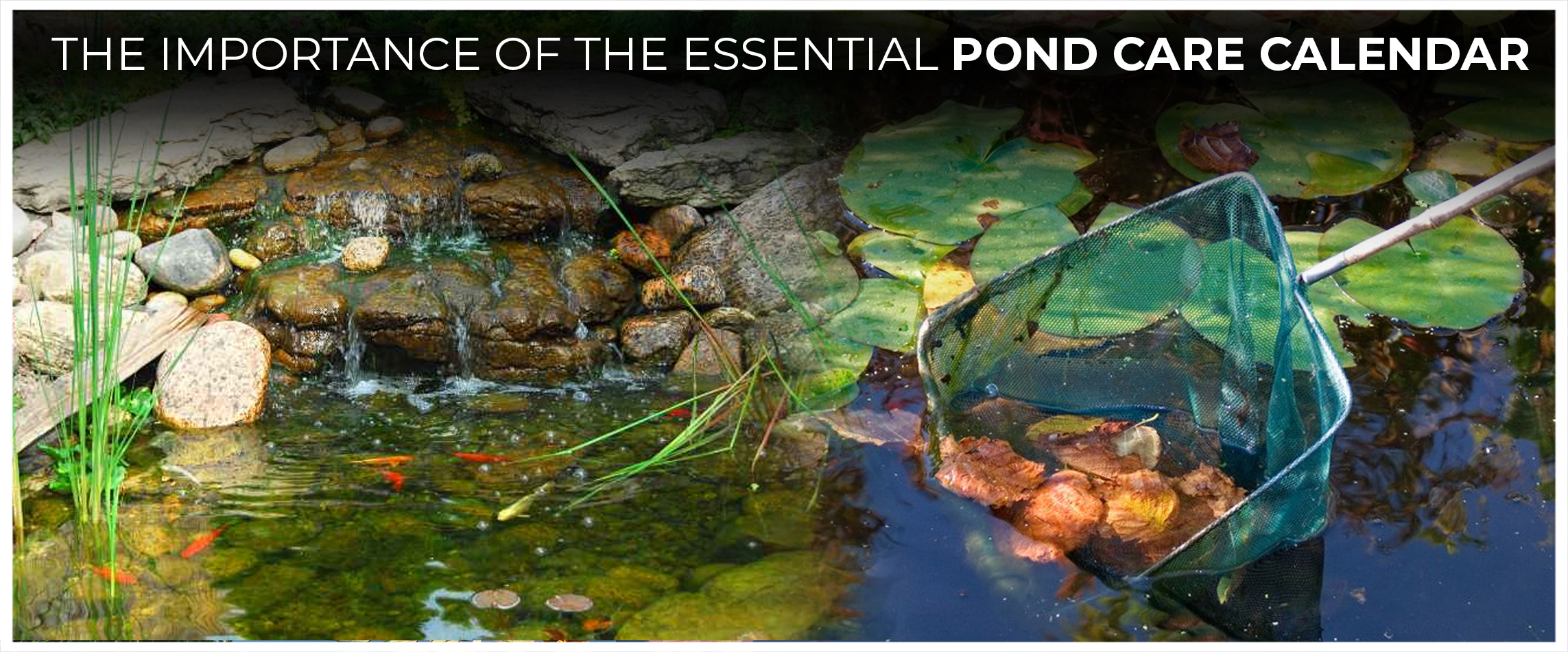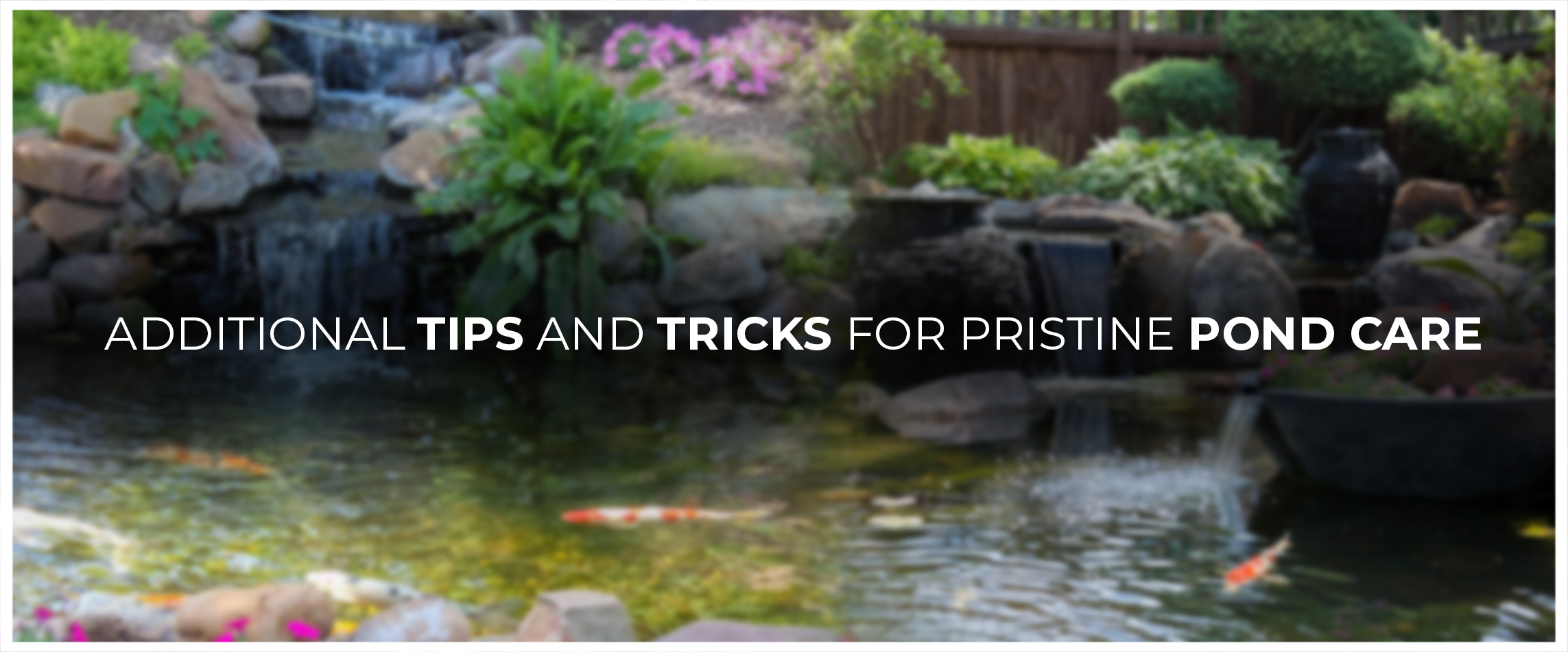A well-maintained pond epitomizes serenity and natural elegance in cultivated landscapes.
Achieving and sustaining such a picturesque water haven demands precise attention to detail and a structured pond care regimen.
This blog delineates the essential monthly maintenance tasks, ensuring the longevity and vitality of your pond.
From algae control to fish health, each aspect is approached with a professional and formal touch.
The Importance of The Essential Pond Care Calendar
A precisely maintained pond is not just a picturesque addition to your landscape but a living ecosystem requiring consistent care and attention.
The Essential Pond Care Calendar outlines monthly maintenance tasks for sustaining a pristine water haven.
Understanding the significance of this calendar is paramount for pond owners who aspire to cultivate a thriving aquatic environment.
January – Commence the Year with Diligent Pond Cleaning and Water Testing
As the inaugural month of the year unfolds, the prudent pond owner embarks on a journey of restoration and preparation. January calls for a comprehensive pond cleaning initiative, ridding the aquatic environment of accumulated debris.
Simultaneously, meticulous water testing is imperative to ascertain and rectify any imbalances in pond water quality. Adjusting pH levels becomes paramount in laying the groundwork for a flourishing pond ecosystem.
February – Strategize for Spring: Pond Filters and UV Clarifiers
With the advent of February, anticipation for the forthcoming spring season permeates the air. This month is earmarked for strategically servicing pond filters, ensuring their optimal functionality.
Integration of UV clarifiers becomes pivotal in combating unwanted algae proliferation and maintaining water clarity. These proactive measures set the stage for the imminent rise in temperature, heralding the resurgence of aquatic life.
March – Precision in Pond Pumps and Eco-Friendly Initiatives
March beckons the inspection and maintenance of pond pumps. Ensure that these essential components operate seamlessly, facilitating proper water circulation and aeration.
Concurrently, consider the integration of eco-friendly practices within the pond environment.
From sustainable plant choices to energy-efficient equipment, March emphasizes the importance of responsible pond management.
April – Nurturing the Pond Plants and Cultivating a Wildlife Oasis
As April unfolds, the focus pivots towards nurturing pond plants, which play a pivotal role in maintaining water balance and providing habitat for aquatic life.
Additionally, this month encourages the cultivation of a wildlife pond, fostering biodiversity within the ecosystem.
Creating an environment that welcomes frogs, dragonflies, and other fauna contributes to the pond’s ecological balance.
May – Comprehensive Pond Algae Treatment and Pond Leak Repair
May marks a critical juncture in the pond care calendar, necessitating a comprehensive algae treatment plan.
Implementing targeted measures to control and prevent algae blooms is imperative for the pond’s overall health.
Concurrently, meticulous pond leak detection and repair protocols are enacted to safeguard against potential water loss and maintain structural integrity.
June – Balancing Act: Fish Health and Seasonal Pond Care
June heralds the onset of summer, demanding a meticulous balancing act to ensure optimal fish health. Evaluate the water parameters to ascertain their suitability for fish inhabitants. Additionally, reinforce seasonal pond care practices, considering the specific requirements dictated by the warmer weather.
Adjusting feeding schedules, monitoring oxygen levels, and addressing potential stressors become integral facets of June’s pond care agenda.
July – Peak Pond Maintenance: Aeration and Sustainable Practices
July, the zenith of summer, mandates peak pond maintenance efforts. Focus on enhancing pond aeration, ensuring adequate oxygen levels to support the diverse aquatic life. Simultaneously, emphasize sustainable practices to minimize the environmental impact of pond maintenance.
Consider eco-friendly products, efficient energy consumption, and responsible water usage integral to a conscientious pond care approach.
August – Pond Liner Repair and Preparing for Autumn
As August unfolds, meticulous attention is directed towards inspecting and repairing pond liners. Any signs of wear or damage should be promptly addressed to prevent leaks. Simultaneously, preparations for the impending autumn season commence.
Consider gradually reducing fish feeding, trimming aquatic plants, and adjusting aeration to accommodate the changing environmental dynamics.
September – Transitioning with Pond Winterization
September signifies the onset of autumn, marking the initiation of pond winterization protocols. As temperatures decline, focus on transitioning progressively the pond and its inhabitants to the impending winter dormancy.
Implement measures such as reducing feeding, removing debris, and installing protective pond netting to safeguard against falling leaves.
October – Last-Minute Pond Winterization and Reflection
October accentuates the importance of finalizing pond winterization efforts in the penultimate month. Remove any remaining debris, install pond heaters if necessary, and fortify the pond against potential freezing.
Take this opportunity for reflection, reviewing the successes and challenges encountered throughout the year and contemplating potential improvements for the future.
November – Sustaining Fish Health and Fine-Tuning Winterization
As winter takes its firm grip, November underscores the ongoing commitment to sustaining fish health during the colder months.
Monitor water quality, ensuring that fish inhabitants are provided with an optimal environment for winter survival.
Fine-tune winterization measures, adjusting them based on the prevailing weather conditions to fortify the pond against the challenges posed by winter.
December – Pondering Pond Care Achievements and Planning Ahead
In the closing month of the year, December invites contemplation and planning for the future. Reflect on the achievements and challenges in maintaining the pond throughout the year.
Use this time to strategize for the upcoming year, consider potential enhancements to pond equipment, explore new pond care techniques, and ensure a seamless transition into the next cycle of monthly maintenance tasks.
Additional Tips and Tricks for Pristine Pond Care:
Natural Algae Competitors:
Introduce oxygenating plants like Anacharis and Hornwort to outcompete algae for nutrients. These plants enhance oxygen levels and add a natural aesthetic to your pond.
Beneficial Bacteria Boost:
Enhance the breakdown of organic matter by adding beneficial bacteria regularly. These bacteria aid in nutrient cycling, reducing the potential for algae blooms and promoting a balanced ecosystem.
Strategic Plant Placement:
Place floating plants strategically to provide shade and reduce sunlight reaching the pond’s bottom. This shading inhibits algae growth and helps maintain water clarity.
Selective Fish Feeding:
Adjust fish feeding according to the water temperature. As temperatures drop, reduce feeding to prevent undigested food from accumulating, which could compromise water quality.
Seasonal Plant Pruning:
Regularly trim overgrown aquatic plants, especially in the fall, to prevent decaying plant matter from affecting water quality during winter.
Winter Debris Removal:
Remove any remaining debris from the pond before winter fully sets in. This proactive measure prevents nutrient buildup and enhances water quality during the dormant winter phase.
Smart Aeration Strategies:
Use a variable-speed pond pump to adjust aeration levels based on seasonal needs. Higher aeration in warmer months supports fish and plant health, while lower levels in winter conserve energy.
Pond Cover Considerations:
Invest in a sturdy pond net to prevent leaves and debris from falling into the water during the fall. This minimizes the impact of decomposing organic matter on water quality.
Regular Equipment Checks:
Schedule routine checks on pond equipment such as pumps, filters, and aeration systems. Promptly address any issues to maintain optimal functionality and prevent disruptions to the pond ecosystem.
Educate Yourself:
Stay informed about the specific needs of your pond inhabitants and plants. Understanding the nuances of your pond’s ecosystem allows for tailored care, ensuring a harmonious and thriving aquatic environment.
Frequently Asked Questions:
Why is algae control crucial for pond maintenance?
Algae, a natural component of pond ecosystems, can quickly become problematic when left unchecked. Excessive algae growth not only detracts from the visual appeal of the pond but can also harm fish, plants, and overall water quality.
Algae deplete oxygen levels during the night and, in extreme cases, can lead to algal blooms, causing imbalances in the pond ecosystem. Effective algae control is essential to maintain the health and aesthetics of your pond.
How do I maintain optimal fish health in my pond?
Optimal fish health in a pond requires a proactive and seasonal approach. Monitor water parameters regularly, including temperature, pH, and ammonia concentrations. Adjust feeding schedules based on the season, as fish metabolism slows in colder months.
Provide adequate aeration to ensure sufficient oxygen levels, and carefully observe fish behavior for signs of stress or illness. These measures ensure a conducive environment for your pond fish, promoting their well-being.
Wrapping it Up:
The journey of maintaining a pristine pond requires a disciplined and structured approach. The monthly maintenance tasks outlined in this Pond Care Calendar serve as a blueprint for cultivating a thriving aquatic oasis.
From the meticulous pond cleaning initiatives in January to the strategic pond winterization in December, each month plays a crucial role in sustaining the delicate balance of the pond ecosystem.
By adhering to these professional and formal guidelines, pond owners can revel in the beauty of a meticulously cared-for water haven that stands the test of time.



